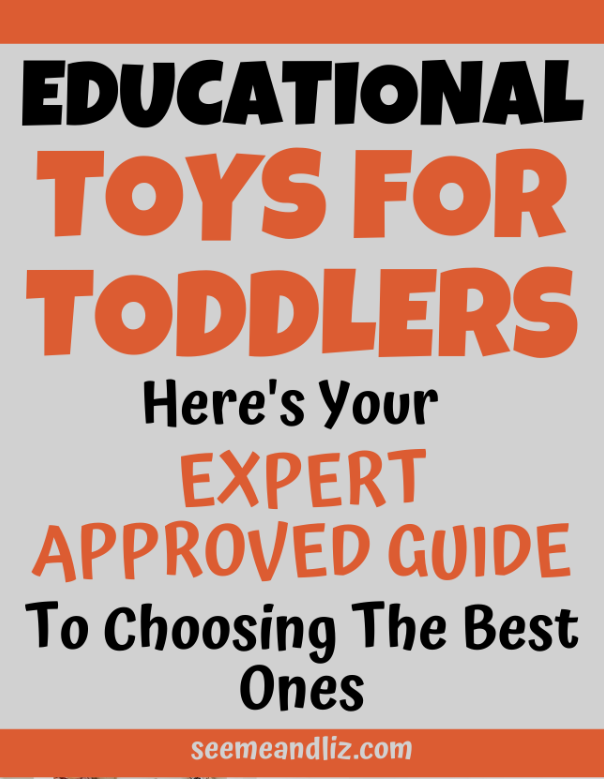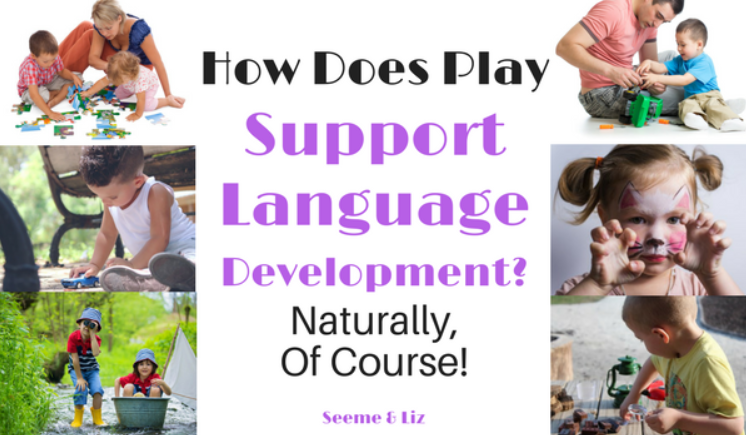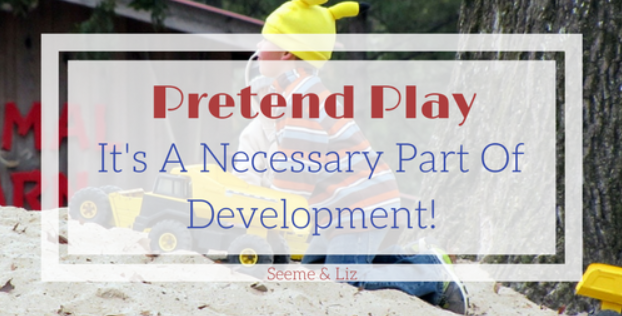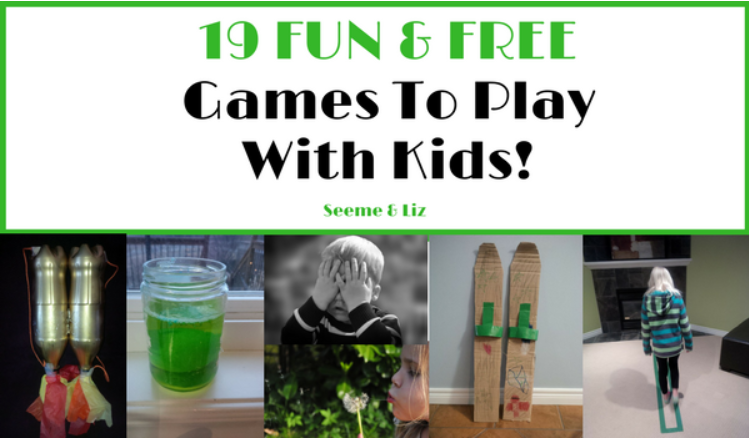What is the first thing that comes to mind when you think of educational toys for 2 year old’s?
Do you think of flashy “educational” toys that can teach the alphabet, numbers, letters, colors, shapes, etc?
Toys that require batteries like a leap pad?
Unfortunately, these are not the best toys and the hype surrounding them is thanks to some good marketing.
When it comes to “educational” toys, “educational” is a very subjective term.
Since parents want the best for their children, they open their wallets and fork out a lot of money for these toys and all of the promises they bring.
However, I am hear to tell you that a 2 year old should not learn these skills from a toy and if they do it is often simply rote memorization.
At the age of 2, children should be interacting with their parents, caregivers and peers.
We are humans and not robots or cyborgs (at least for now), we learn from interacting with one another.
Of course, eventually a toy (or an app or TV show) can “teach” a child the alphabet, numbers and even how to “read” some words.
But if your child isn’t learning other skills needed for future success, it really doesn’t matter if your 2 year old can recite the alphabet.
Children need a large vocabulary base in order to be successful in the school years. This will make learning to read easier as well as to carry on conversations.
Children must also develop problem solving skills, the ability to predict, fine and gross motor skills, the ability to ask and answer questions, and the list goes on.
In fact, there are studies that link social emotional development to a child’s future success. These are the skills that are learned through free play with peers!
When I first started writing this article I was planning on listing my top educational toys for 2 year old’s.
But that would be somewhat redundant as I have already written a great guide with the top learning toys for 2 year old’s!
If you want to find out about those toys, make sure to read that article. I also share a bunch of language development and learning tips along with each toy that is recommended.
So, instead of just another list of toys, here is a list of some things you should look for in a toy and if the toy meets some (preferably all) of these criteria then you have found a great educational toy for your toddler!
Features Found in True Educational Toys For 2 Year Old’s
Open Ended
This means that the toy can be played with in a variety of different ways.
Let’s take blocks as an example.
Blocks can be used to build a tower, a house, a plane, or as your children get older she may even pretend each block is a different kind of food and use them to make some interesting dishes in her play kitchen!
Introduces New Vocabulary
A two year old still has many words to learn, so most toys for this age group will probably facilitate language development.
Examples of toys that could introduce new vocabulary to a 2 year old include: a farm playset, Mr/Mrs Potato head, puzzles, etc.
Encourages Parent–Child Interaction
Toys that do not require batteries provide for the most parent and child interactions.
This is because the toy is not doing the talking.
You as a parent will interact more and use more words with your child if the toy is silent.
In fact, studies have been done to demonstrate this.
Allows For Independent Play
This seems to contradict my last point, but it is important for children to learn to play independently.
As your child gets older, the ability to play independently can lead to more creative pretend play because they aren’t always waiting for an adult to guide them.
Pretend Play
Toys that don’t require a child to follow a specific set of rules are wonderful for fostering a love of pretend play.
A pop up tent is a great example of this. The tent can be used as a tent, or it can become a restaurant, rocket ship, boat, etc.
Ride on vehicles are another example of toys that can help with the development of pretend play.
And of course, my NUMBER ONE recommended toy for learning and development is also perfect for open ended pretend play – a kids toy kitchen set!
Does Not Require Batteries For Optimal Functioning
As I mentioned in the parent–child interaction section, toys that require batteries often take away from meaningful parent and child interactions as the toy is often loud and “talks” so that the parent and child do not need to communicate as much.
Parents tend to use less novel vocabulary words and the number of utterances spoken by the parent often decrease.
It’s unfortunate that so many toys these days require batteries.
This is because the toys are trying to explicitly teach a child a skill such as counting, letters or colors.
Keep in mind, the toy will always say the same thing.
In order for a young child to learn they do need to hear words 100’s of times, however, variation is also good.
And remember, children are always learning. Even if it doesn’t look like it on the surface. This is why free play is so important!
Inspires Creativity and Imagination
At this age a cardboard box can inspire more creativity than the toy that probably came inside of it will.
Two year old’s are learning new skills every single day.
They are testing out all of their senses as well.
Because of this, the more low tech and passive the toy (that is, no to minimal bells and whistles) the better.
Have you ever watched a two year old’s face light up as she plays with a cardboard box?
First she might sit in the box, then she might turn it over and try to stand on it.
Next she might put her favorite stuffed animals inside and push them around pretending the box is a car, boat, plane or train.
Hopefully she won’t try to take a bite out of it, but you never know.
The Takeaway
First of all, I want you to know that I am a real parent and parenting is tough.
So yes, when my children were 2 years old, they did have some of the toys I say not to buy.
Most were given as gifts, but I did buy my son a little toy laptop to keep him occupied in the car.
I figured this was still better than letting him veg out to videos on a DVD player for long car rides.
At least there was some interaction going on between him and the toy.
I don’t expect you to never have these types of toys in your house.
But know that learning toys for toddlers with all the bells and whistles that claim to turn your child into a genius should be taken with a grain of salt.
The message that I want you to take from this article is that educational toys for 2 year old’s do not need to be complex.
If the toy comes with an instruction manual, think again about buying it.
For this age group toys should be simple.
Your 2 year old has many years ahead to figure out the latest technology (as it is always changing), but he only has a small window of time to learn the foundation skills that will lead to success later on!




